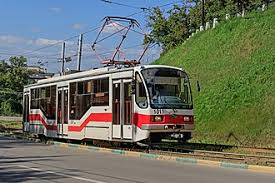
Introduction
Highway 407 ETR (Electronic Toll Route) plays a vital role in Ontario’s transport infrastructure, offering a crucial alternative for commuters and commercial transport. Recently, the highway has seen significant developments aimed at enhancing driver experience and addressing congestion, which is increasingly important as Ontario’s population grows and urban areas expand.
Recent Developments
As of October 2023, the 407 ETR has introduced a series of technological enhancements to improve toll collection efficiency and user satisfaction. This includes the rollout of a new mobile application designed for easier management of accounts, real-time traffic updates, and user notifications about toll costs. These innovations are positioned to assist drivers in making informed choices about their routes and managing expenses more effectively.
In addition to the new app, the highway has upgraded its electronic signage systems, providing clearer information on travel times and incidents. This aims to reduce delays and help drivers plan their journeys more effectively. The improvements come in response to feedback from users and a broader trend of digitization in transportation services.
Impact on Drivers
Despite the investments in technology, users of the 407 ETR still express concerns regarding the toll rates, which have continued to rise. In the past year alone, rates have increased by approximately 3%. The concerns highlighted by drivers include affordability and transparency in how rates are determined. Critics argue that as road congestion increases, so does the financial burden on regular users.
Future Plans
Looking ahead, the management of 407 ETR has committed to further investments in sustainability. Plans include exploring opportunities for integrating electric vehicle charging stations along the route, aimed at catering to the increasing number of electric vehicles on the road. Additionally, there are discussions about collaborating with local governments to enhance public transport connections to key nodes along the highway, which may help to relieve some traffic pressure.
Conclusion
The developments related to Highway 407 ETR signify an ongoing effort to modernize Ontario’s transport system while addressing the challenges of growing congestion and rising tolls. Understanding these changes is crucial for current and future users of the highway. As the province continues to evolve in response to infrastructure needs, the balance between efficiency, cost, and accessibility will be paramount for drivers navigating the 407 ETR.



